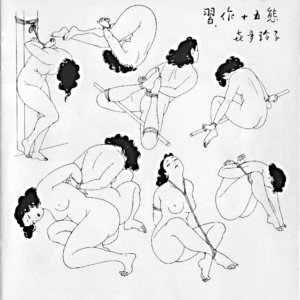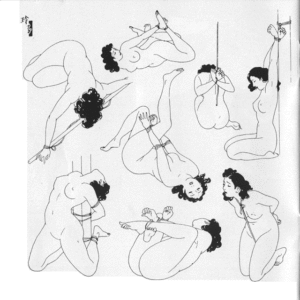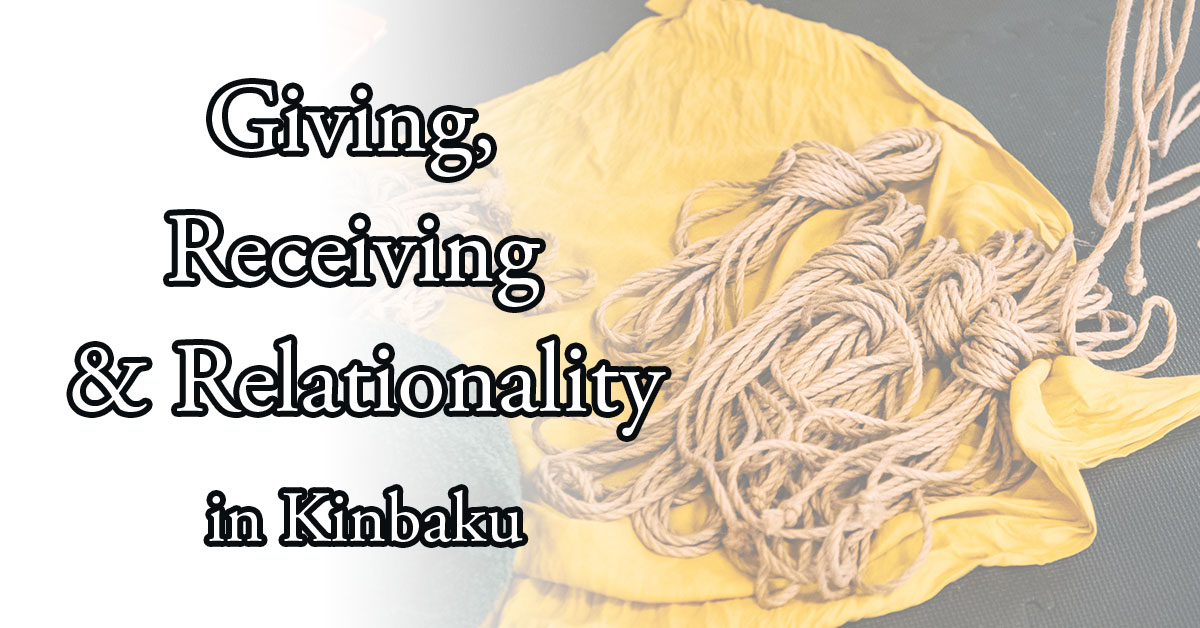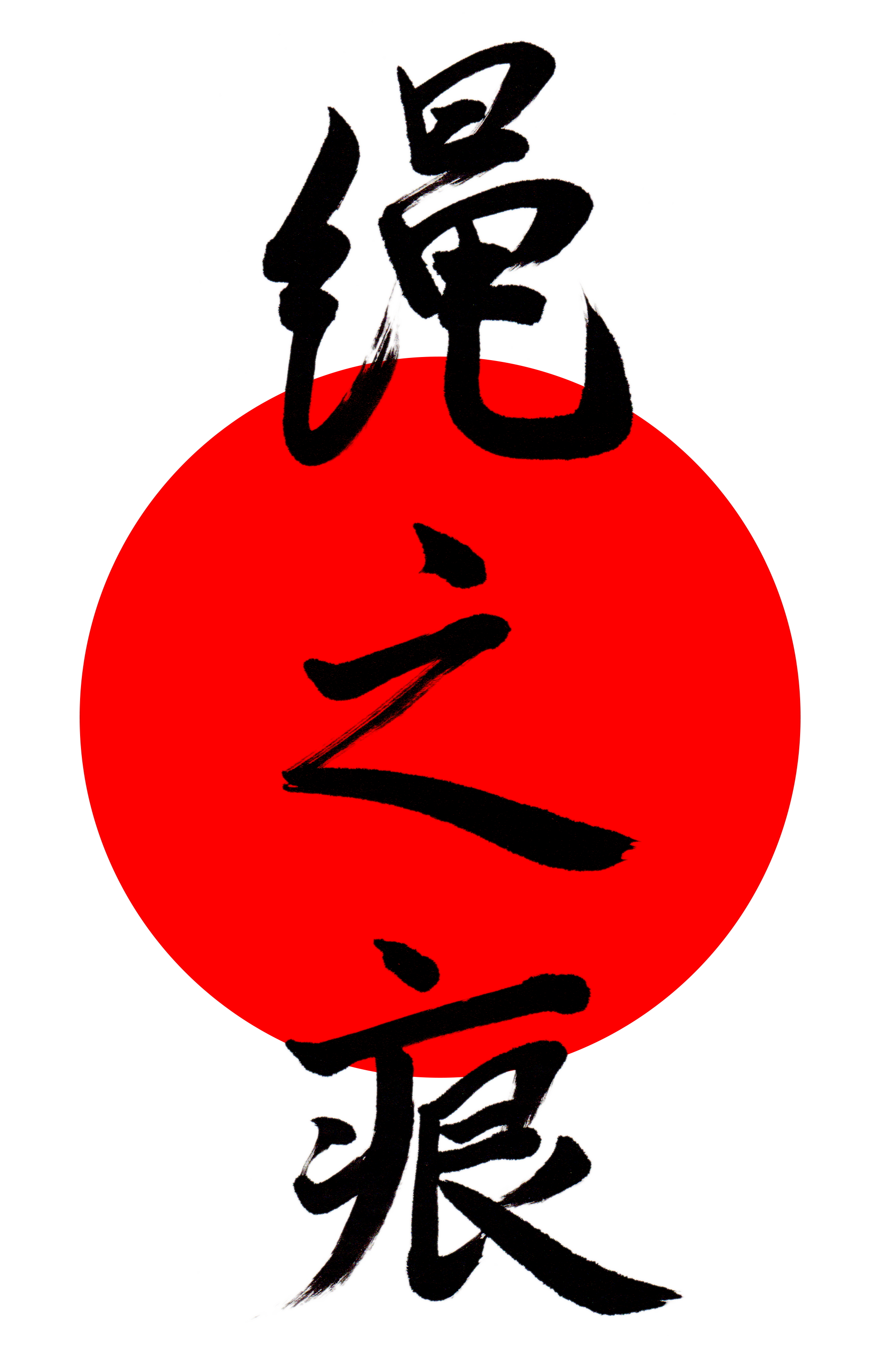It is said that American John Willie’s bondage work first appeared in Japan during the Korean war; in the “abnormal” magazine Kitan Club.

The merge of eastern and western “abnormality” served to show the state of Japanese abnormality at the time. Examples may be seen in the picture book “Blue Decadence Hospital” by Takashi Shima, a Japanese hybrid of Apres-guerre and Willie’s “Sweet Gwendoline”.
According to bondage master Nureki Chimuo, the “Ten Woman…” picture is without doubt Japan’s first example of seme-e (a picture of sexual assault), and quite clearly targeted its appeal at bondage enthusiasts. The publisher of Kitan Club was so pleased with the sales of the issue, that he decided to gradually change the content from one of general amusement to a serious magazine for the so-called “abnormals”.
In seme-e, Reiko Kita had in fact renewed what was largely a Kabuki passion of master Seiu Ito. Reito Kita was actually an alias for Ko Minomura, the person practically responsible for the transformation of Kitan Club into an “abnormal” magazine.
Minomura first encountered seme-e when he was a child. Playing in a library warehouse, he came across such pictures by accident and was totally taken in by the beauty of the rope. One of these pictures displayed an almost naked princess suspended under a pine tree, her hands tied behind her back with coarse rope. An ugly thug was also pictured, sticking his hands between the princess’s legs. Another picture showed a garden in snowfall, with a stark naked young woman suspended in the air by hempen cords, shivering with cold and shame. A hoodlum master and a wicked old hag are shown beating the young woman with a broken bamboo stick. Yet another picture was even more erotic, with a lecherous king sexually assaulting one of his house maids.
The discovery of these pictures gave the child an inexplicable ectasy. He later became a pupil of Seiu Ito, and he learned that these pictures were termed seme-e.
Through Kitan Club, Minomura displayed a variety of bondage pictures, serving to satisfy an eager readership of bondage enthusiasts. It was through this magazine that bondage in Japan began on a clear and definite course.
Another remarkable magazine appeared after the war under the title of Fuzoku Kitan and featured western bondage artists such as Willie, Stanton and Eneg. This magazine later evolved int a homosexual magazine, featuring a treasure trove of bondage and hara-kiri, as in Kitan Club, but gave a more modern impression due to its display of western bondage and fetishism.

At that time the following comment was made about Willie:
“We can see in Willie’s work that the main element is not the actual bondage but various other objects that are used. These are not used merely as objects, but as props for the attainment of a certain beauty. These objects are mostly high heeled shoes, long laced boots and leather corsets. Also some new items like old-style hobbled skirts, which are long, tight skirts, modified with long gloves that allow both hands to be tied together. These objects greatly pleased enthusiasts.”
Willie’s work, with its use of these objects, was attractive not only to bondage enthusiasts, but also to those who had a fetish for such objects. Thus, regardless of the difference in methodology and aesthetics between Japan and the west, this new strain of western bondage was responsible for starting a new scene of fetishism in Japan.
The concept of fetishism can be seen in general sex magazines in both pre and post war Japan. However, it was in magazines like Kitan Club or Fuzuka Kitan that consciously catered to enthusiasts. They introduced warious pictures from the Victorian Era, focusing on erotic fetishism
Headed by Willie, western bondage renewed fetishism images from the past, largely coming from pin-ups brought into Japan by American soldiers during the Korean war. Unfortunatly, the bondage scene declined in the U.S. along with a lack of success in the Korean war and a domestic recession, and Willie’s later years were rather obscure.
However, in Japan which was ironically revitalised by the Korean war, the bondage scene rebuilt itself on a traditional base and Japan became something of a leader on the art. Japanese bondage has succeeded the tradition of seme (sadism), and now creates a rather calm and passionate atmosphere of an aesthetic, supported by an unmistakable craft. Western bondage differs from its Japanese counterpart on this point, as it seeks to toy with the act of love, and trying to attain a complete effect by uniting the female with various objects, binding equipment and clothes. On the other hand, in Japanese bondage the exchange of passion between the active and passive subjects is an axis upon which the act revolves.
In general however, these distinctions are not often clearly made, and have been almost obscured into a sexual “normality” in Japan, which remains the sadomasochistic kingdom of the world.
By Masami Akita
Translated into English by Craig Peacock
Taken from the CD inlay booklet of Merzbow’s Music for Bondage Performance












Leave A Comment